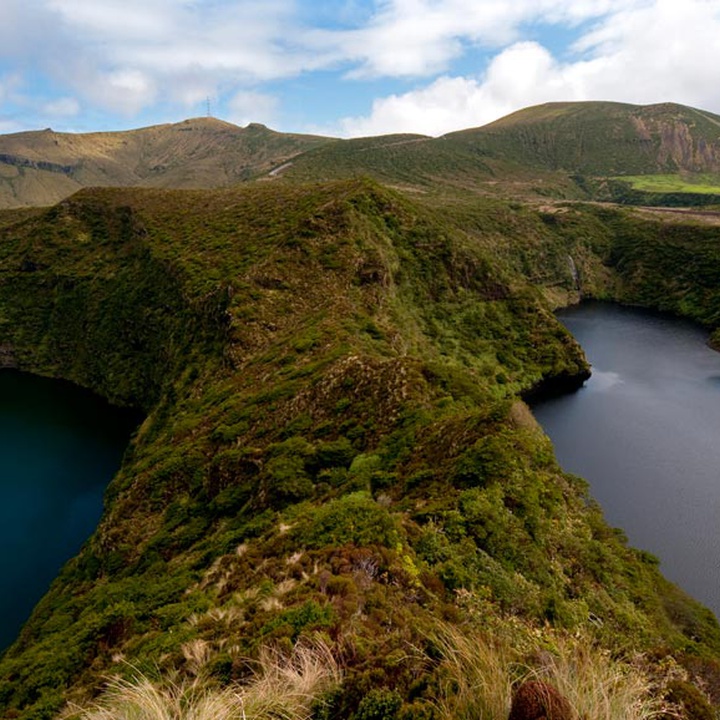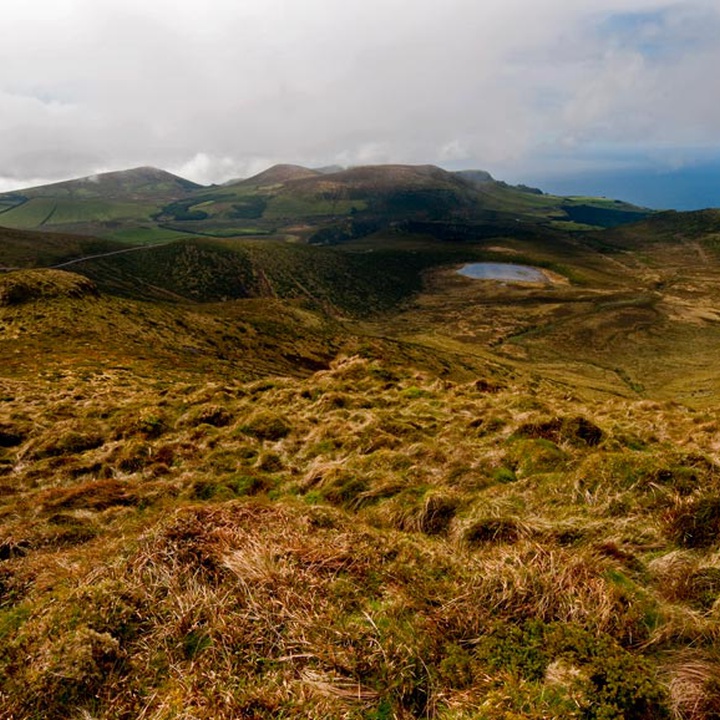Text size:
Morro Alto e Pico da Sé
Nature Reserve
Located on the Planalto Central, this area occupies about 1573 hectares and integrates the Morro Alto, the highest point of the island with 914 metres of altitude, and the calderas Branca, Negra, Comprinda and Seca.
This area has unique geomorphology, marked by the Caldeira Branca (a tuff-ring of smooth slopes) and the maar type explosion craters of the Caldeira Negra, the Caldeira Comprida and the Caldeira Seca that, except for the latter, have a lagoon in the bottom.
Caldeira Negra, with rocky and steep slopes, is occupied by the Lagoa Negra (or Lagoa Funda), which is the deepest lagoon of the Azores with about 115 metres of depth.
On this Nature Reserve occur the most variable flora species endemic of the Azores, with extensive peatbogs blankets, being also possible to observe some birds.
Geologically, the origin of these four volcanic depressions (calderas) is associated with hydromagmatic eruptions, where the ascending magma contacts with water, originating a significant explosive activity. In turn, Pico da Sé is a trachytic dome placed between the valleys of Ribeira da Badanela and Ribeira da Fazenda de Santa Cruz (streams), two important watercourses, which erosion uncovered several volcanic vents and basaltic and trachytic dykes, through reliefs that are more protuberant than the adjacent areas.
Regarding vegetation, we highlight the species Frangula azorica, Laurus azorica, Ilex azorica, Vaccinium cylindraceum, Viburnum treleasei and Euphorbia stygiana ssp. stygiana. The humid Atlantic climate acts as an ecological modeller resulting in a “foggy area” with very strong winds and high precipitation, creating peatbogs mainly forested by Juniperus brevifolia, which are the biggest forest of Juniperus brevifolia of the Azores. These peatbogs extend throughout thick and continuous layers of Sphagnum spp., which gives this high area a peculiar physiognomy, different from the rest of the island's landscape.
It is also an important zone for many migratory birds as the Egretta garzetta and it is the place that has the highest concentration of Sterna hirundo on the island’s interior.
This area is crossed by the Miradouro das Lagoas - Poço do Bacalhau (PR03FLO) walking trail, integrates the Central Zone - Morro Alto Special Area of Conservation (SAC) within the Natura 2000 network, and includes geosites of the Azores UNESCO Global Geopark and one Ramsar Site under the Ramsar Convention.







